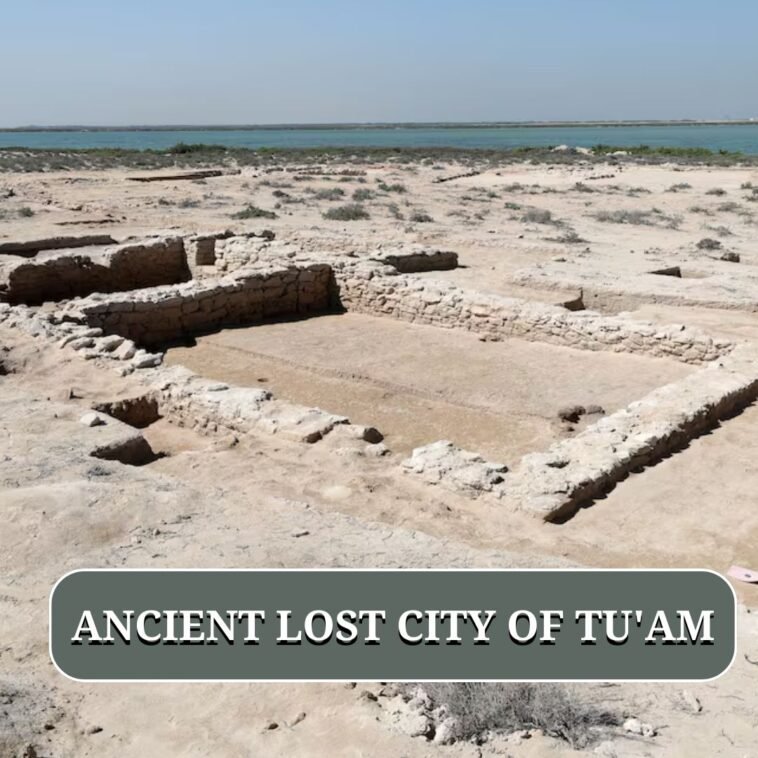Archaeologists in Umm Al Quwain believe they have unearthed the ancient lost city of Tu’am, a once-vibrant capital on the Gulf coast known for its exceptional pearls. This remarkable find could rewrite the historical narrative of the region, offering insights into a prosperous community that flourished around the sixth century.
Table of Contents
- A Renowned Capital and Pearling Hub
- Sophisticated Settlement Found
- Ongoing Excavations by the Department of Tourism and Archaeology
- The Rise and Fall of Tu’am
- Social Stratification and Urban Expansion
- A Thriving but Crowded City
- Cosmopolitan Trade and Cultural Exchange
- Echoes of Past Pearling Towns
- The Mystery of the City’s Decline
- Future Prospects and Continuing Research
A Renowned Capital and Pearling Hub
Tu’am, known for its pearling industry and lauded in ancient Arabic texts, was a significant urban center until it declined due to plague and regional conflicts. Over time, it vanished from memory. However, recent excavations on Al Sinniyah Island have revealed evidence of a substantial settlement where a pearling village and a Christian monastery were discovered, leading experts to believe they have located the legendary city.
Sophisticated Settlement Found
Archaeologists uncovered the remnants of large tenement buildings tightly clustered around narrow alleyways, indicating a sophisticated settlement. These structures suggest a densely populated area that was home to thousands and featured a clear social hierarchy.
Ongoing Excavations by the Department of Tourism and Archaeology
The site is being excavated under the guidance of the Umm Al Quwain Department of Tourism and Archaeology, led by Sheikh Majid bin Saud Al Mualla, in collaboration with local and international partners. Rania Hussein Kannouma, the acting director of archaeology and heritage, noted that the focus this year has been on the southern end of the pearl fishing city and the Christian monastery, aiming to document and understand the site’s layout and architecture.
The Rise and Fall of Tu’am
Dating back to the fourth century, the settlement reached its zenith in the fifth and sixth centuries, attracting Nestorian monks who established a Christian monastery. Initially thought to be a lay community, ongoing excavations have revealed that the site was far more extensive, likely the largest settlement on the Gulf coast of the Emirates during that period.
Prof Tim Power of UAE University emphasized the importance of these findings, which align with early Islamic geographical sources. The densely packed buildings discovered this winter, home to numerous residents, mark a settlement spanning about 10 hectares, showcasing a transition from modest stone huts to larger homes with lavish courtyards, reflecting the town’s expansion driven by the pearl trade.
Social Stratification and Urban Expansion
Dr. Michele Degli Esposti, head of the Italian Archaeological Mission in Umm Al Quwain, highlighted the evident social stratification within the city. As wealthier merchants relocated to more spacious compounds in the north, workers remained in the central areas, illustrating a clear division in living conditions.
A Thriving but Crowded City
The Sinniyah Island site, protected by the Khor Al Beida lagoon, offers a vivid picture of a bustling yet crowded city. Each tenement, about 30 square meters, was likely a smoky environment due to the prevalence of tannour ovens used for baking bread. The discovery of date wine jars from Iraq and fish bones suggests that the inhabitants were engaged in both local fishing and broader trade networks.
Cosmopolitan Trade and Cultural Exchange
Artifacts, such as jars inscribed with ancient Aramaic, reveal the city’s cosmopolitan nature and its connections to trade routes extending to Iraq, Persia, and India. The rich resources of the lagoon, including mangroves and pearl beds, contributed to Tu’am’s strategic importance and prosperity.
Echoes of Past Pearling Towns
Prof Power likened the life in Tu’am to that depicted in 19th and 20th-century photographs of Dubai’s pearling towns. He explained that the city, known as To’me in Aramaic and Tu’am in Arabic, derived its name from “twins” and was later rendered as Thomas in Greek and English, linked to St. Thomas, who spread Christianity to the East. Tu’am was a Christian hub for about 200 years before the rise of Islam.
The Mystery of the City’s Decline
While definitive evidence, such as an inscription naming the town, is yet to be found, the absence of other major settlements from this period along the coast strengthens the argument that this is indeed Tu’am. The discovery of mass graves with skeletons showing no signs of violence suggests that a plague, likely the Plague of Justinian, was the cause of the population’s decline.
Dr. Degli Esposti noted the scarcity of objects in the rooms, suggesting a gradual abandonment rather than a sudden exodus. Previous theories placing Tu’am in Al Ain and Al Buraimi are now being reconsidered in light of these findings.
Future Prospects and Continuing Research
Ongoing work at the site, including DNA testing of skeleton samples and techniques like radiocarbon dating, aims to enhance understanding and prepare the area for cultural tourism. Ms. Kannouma affirmed the commitment to preserving the authenticity of the Christian monastery and pearl fishing city for future visitors. The discoveries are expected to significantly reshape our understanding of the UAE’s early history and resonate across the region.
“This site is incredibly promising,” remarked Dr. Degli Esposti. “It offers an exciting opportunity for people to experience the streets of an ancient town.”
Please Subscribe Us to get updated with Qatar News, Saudi News, Kuwait News, Health News, UAE News, Iqama, Visa, Jobs, Banking and More.



